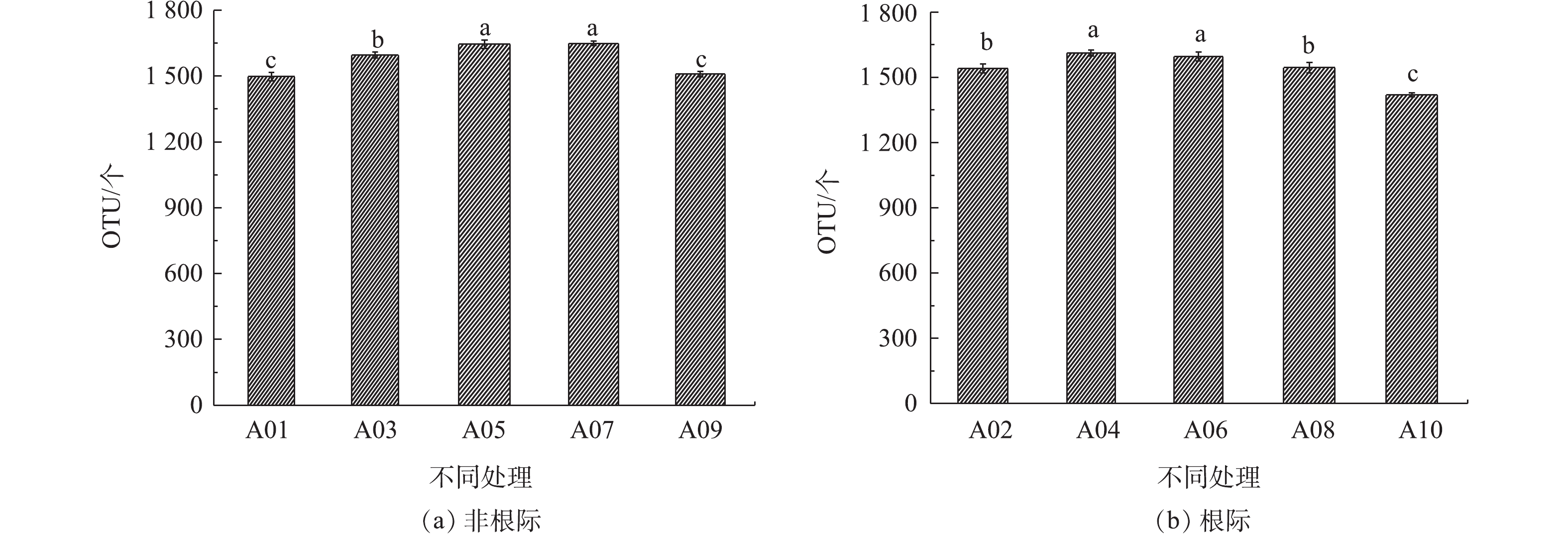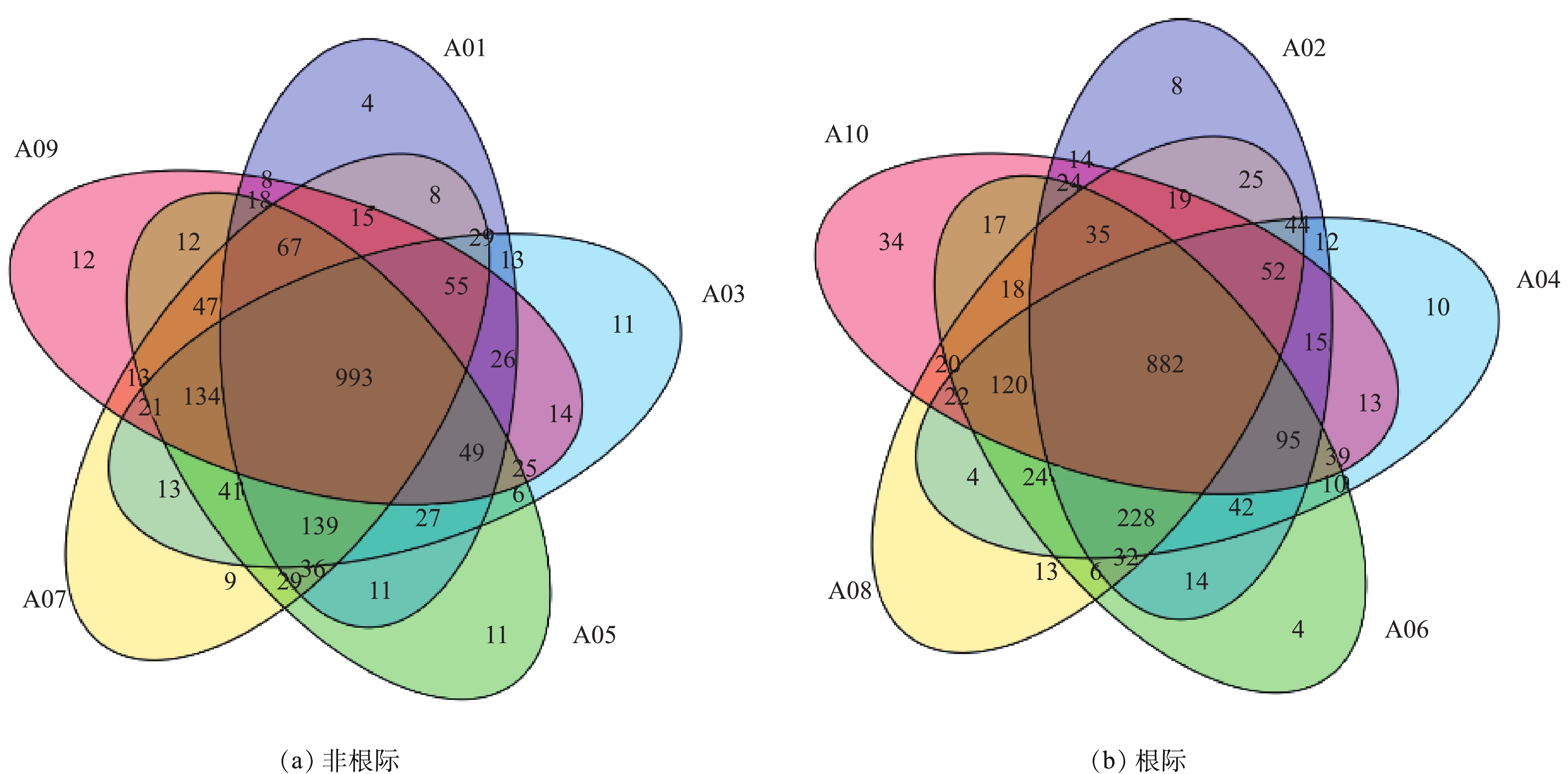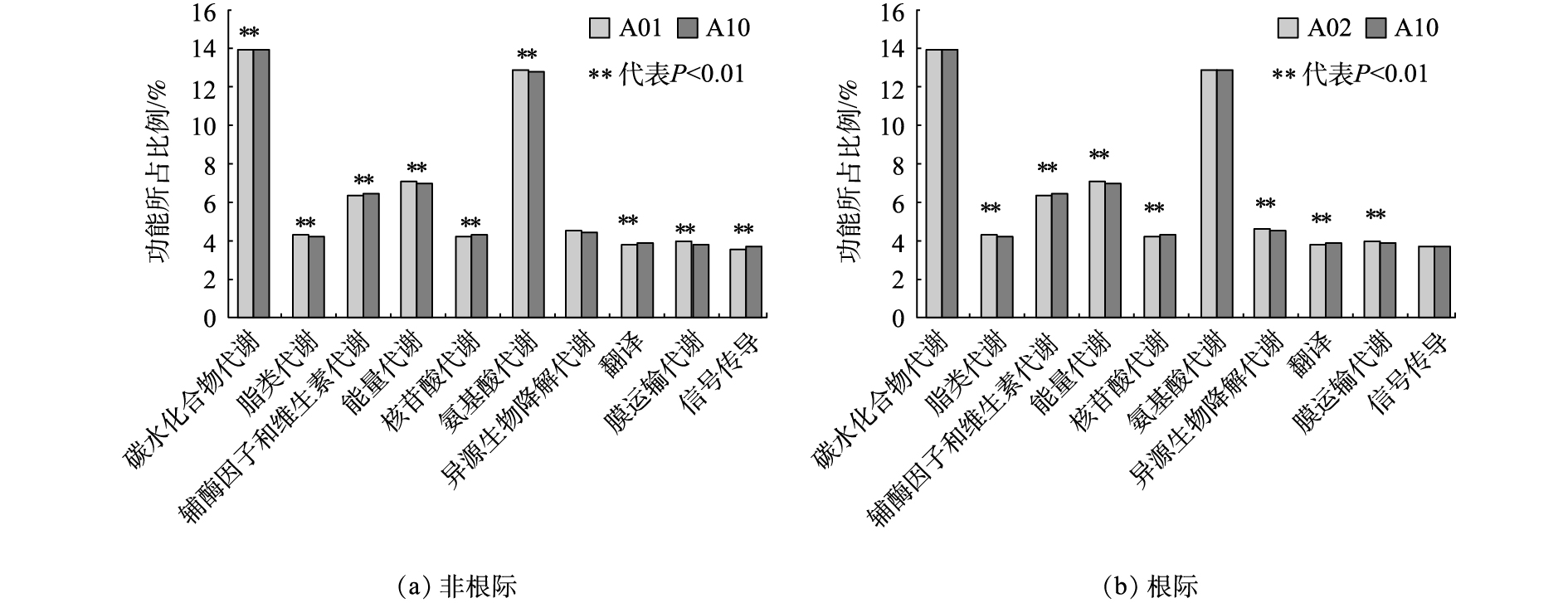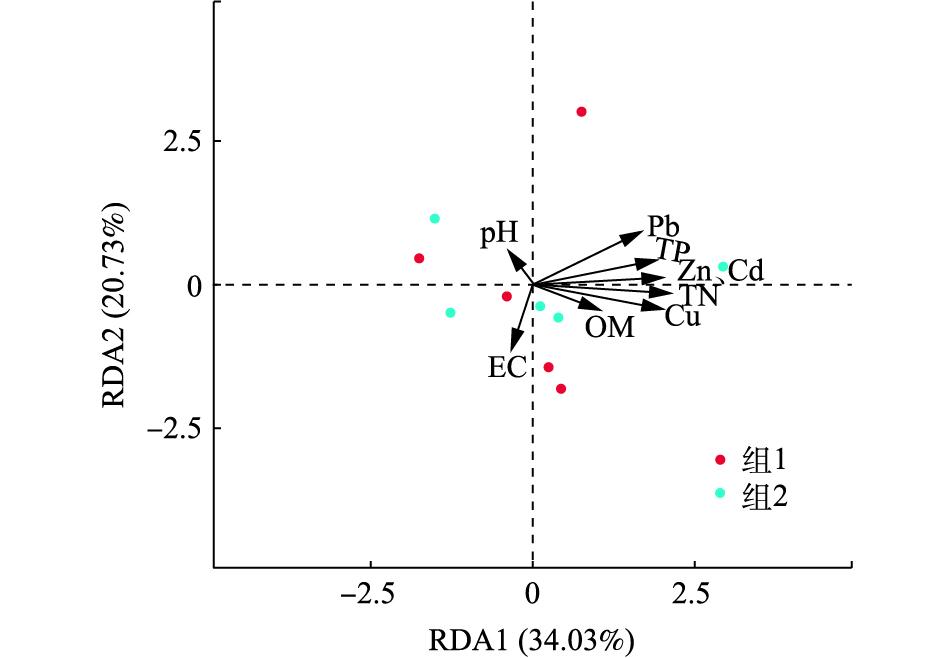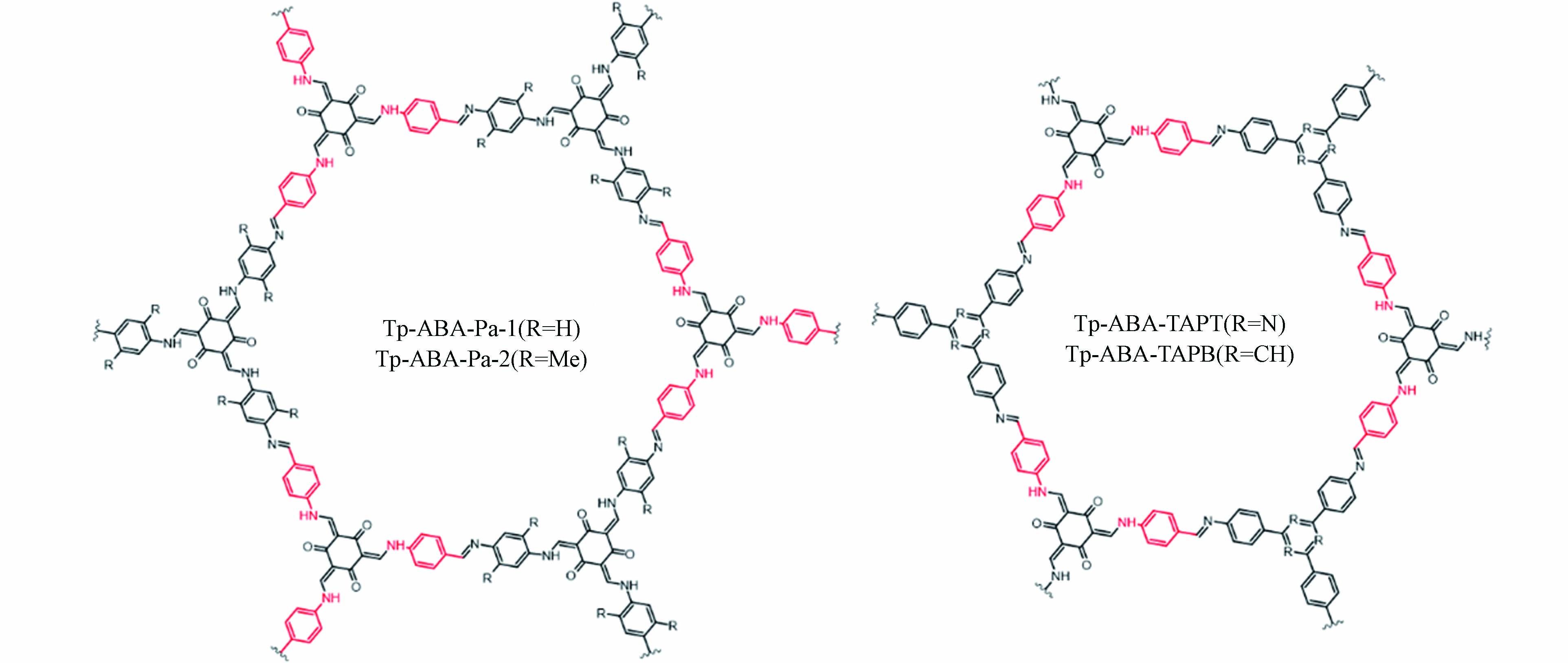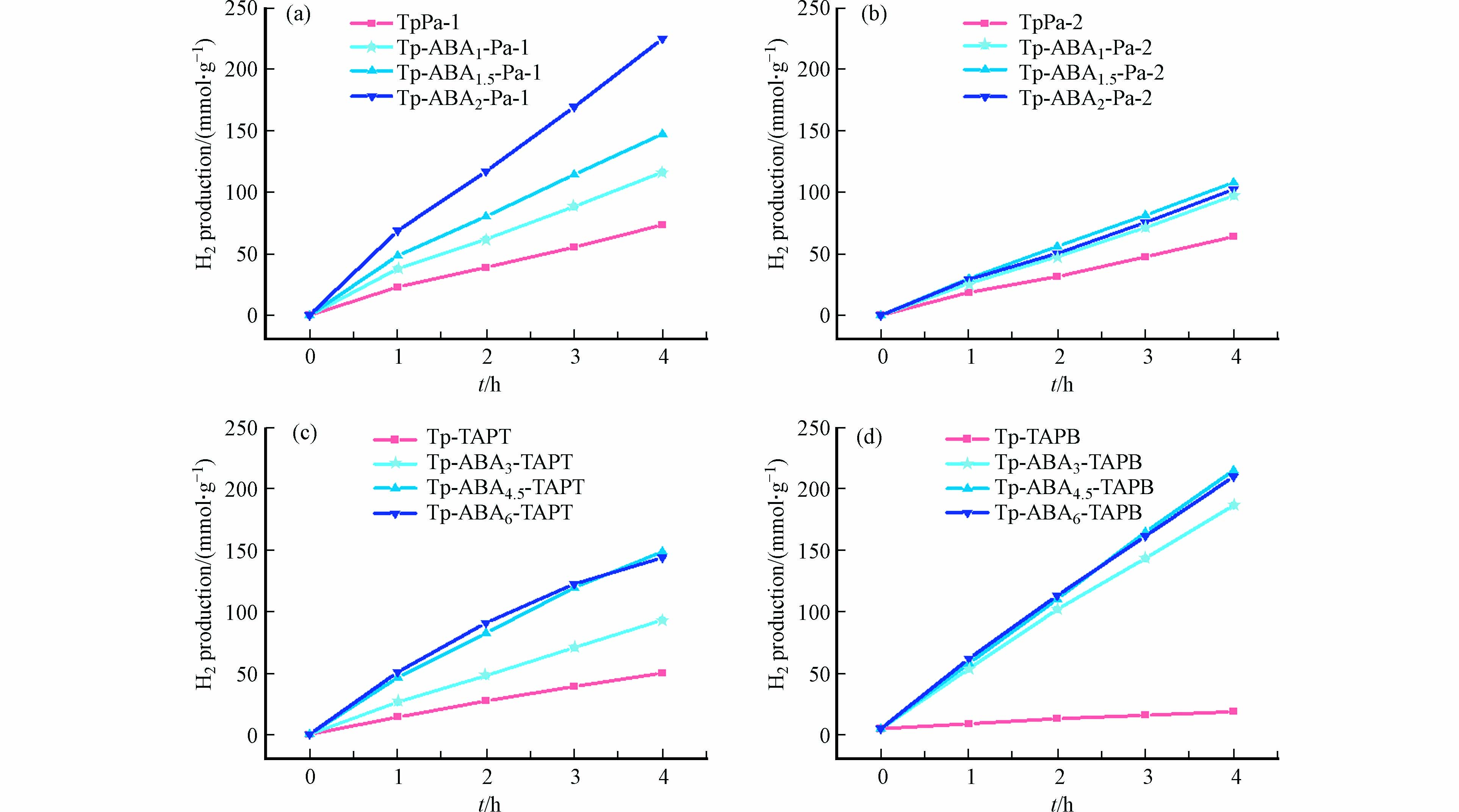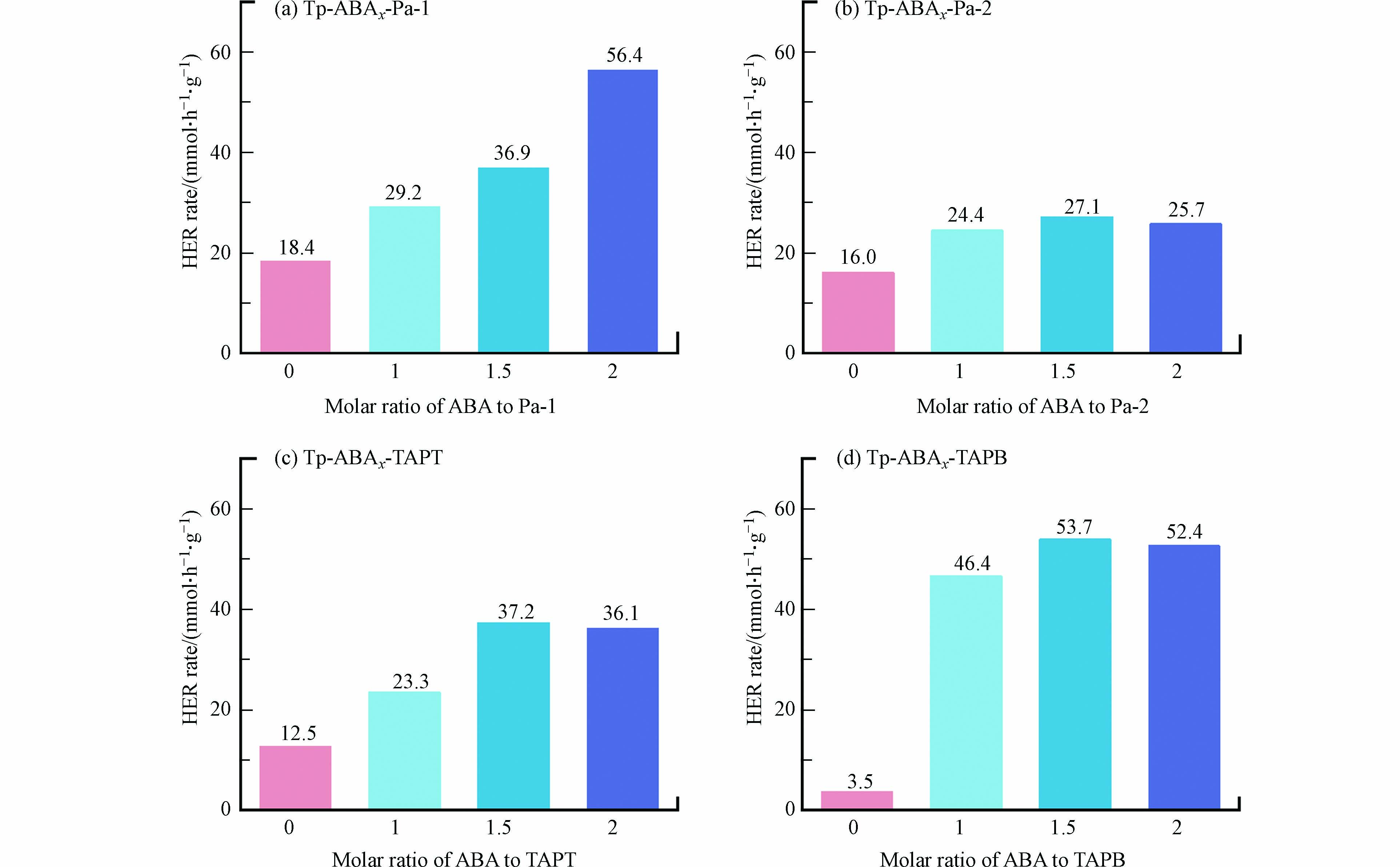-
随着化石燃料的不断消耗和引发的环境问题日益突出,开发可替代的可持续能源已迫在眉睫. 在各种可再生的替代能源中,太阳能是最有前途的一种[1]. 然而,太阳能具有分散性和时空不连续性,需要将其转化成其他能源才方便使用[2]. 氢气能量密度高、不含碳、燃烧产物清洁无污染,因此,通过太阳光水裂解制氢是一种可持续、很有前途的太阳能转换方法[3]. 在光催化水解制氢这一过程中,最重要的就是光催化剂,它负责光的吸收、能量传递和水的分解[4-5]. 目前无机半导体光催化剂(如二氧化钛(TiO2)、SrTiO3、g-C3N4等)在光催化裂解水中占主导地位,但这些材料可见光响应范围较窄,阻碍了实际应用的发展[6–8].
COFs是一类由有机分子单体(即构建单元)通过共价键连接形成的结晶多孔聚合物[9]. 这种材料具有孔隙率高、密度低、比表面积大、孔道规则、孔径可调以及拓扑结构多样性的特点[10–13],在气体储存[14]、污染物吸附[15-16]、分离[17-18]、催化[19–21]以及药物递送[22-23]等应用方面有很大的优势. 近年来,COFs在光催化研究中也显示出巨大的潜力[24-25]. COFs的高度结晶性和多孔结构有利于提高载流子的迁移率,降低电子和空穴的复合率. 完全的共价键连接使得COFs具有良好的化学稳定性,固定在刚性结构骨架中的光活性单元也可以避免被光腐蚀,提高激发态的寿命. 更重要的是,通过合理地调节构建单元的光反应活性,可以精细调节COFs的光响应性和带隙[26]. 因此,COFs是无机半导体光催化剂的理想替代品[27].
Lotsch等以一种腙键连接的三嗪基TFPT-COF为光催化剂,在可见光照射下分解水制氢,氢气的析出速率可达1970 μmol·h−1·g−1[28]. 随后,该团队发现通过调节单体的结构,可以调节COFs的光催化活性[29]. 另外,一些研究表明在COFs的骨架上引入特定的基团,可以显著增强COFs的光催化析氢活性[20,30–32]. 最近,本研究团队也发现,在乙烯撑连接键上引入氰基能显著提高COFs的析氢性能,析氢速率可从116.58 μmol·h−1·g−1提升至698.68 μmol·h−1·g−1[33]. 除了更换单体外,增加COFs的比表面积也可以大幅改善COFs的光催化析氢性能. Zhu等通过合成后框架重构的方法,制备了高结晶、高稳定的β-酮烯胺键连接的RC-COF-1,与常规方法合成的相同COF相比,其比表面积提高了近2倍(580 m2·g−1到1712 m2·g−1),与此同时材料的光催化析氢速率从7.04 mmol·h−1·g−1提升到了27.98 mmol·h−1·g-1 [34].
综上所述,调节单体结构和改善材料晶形是改善COFs的光催化析氢性能的两种主要策略. 本文报道了一种新的合成策略可以用来提高COFs的光催化析氢活性. 通过使用4-氨基苯甲醛作为连接单元,它可以连接氨基和醛基单体形成一系列三组分COFs. COFs骨架中ABA的共价整合使三组分COFs具有比不含ABA的双组分COFs更强的光催化析氢性能. 机理研究表明,ABA对COFs光催化析氢性能的调节主要是因为改变了材料的光学带隙和光生载流子的分离和迁移效率. 该研究结果为改善COFs的光催化析氢性能提供了新的方法,也为增加亚胺连接的2D COFs的功能复杂性开辟了新的道路.
-
2,4,6-三甲酰基均苯三酚(Tp)、1,3,5-三(4-氨基苯基)苯(TAPB)、1,3,5-三(4-氨基苯基)三嗪(TAPT)均来自吉林中科研伸科技有限公司. 氯铂酸六水合物(H2PtCl6·6H2O)、1,4-对苯二胺(Pa-1)、无水1,4-二氧六环和间二甲苯购自百灵威科技有限公司. 2,5-二甲基对苯二胺(Pa-2)、4-氨基苯甲醛(ABA)购自上海阿拉丁生化科技股份有限公司. 试验用水均为超纯水.
-
β-酮烯胺连接的两组分COFs以及三组分COFs的合成方法参见之前的工作[35]. 两组分COFs分别为TpPa-1、TpPa-2、Tp-TAPT和Tp-TAPB,三组分COFs分别为Tp-ABAx-Pa-1、Tp-ABAx-Pa-2、Tp-ABAx-TAPT和Tp-ABAx-TAPB,其中x代表ABA与氨基单体的投料物质的量比.
-
将 5 mg COFs粉末添加到50 mL 0.1 mol·L−1 抗坏血酸水溶液中,超声30 min以帮助 COFs分散. 添加一定量的H2PtCl6·6H2O(相对于催化剂COFs的量为3% wt的 Pt)作为 Pt 助催化剂的前体. 将得到的悬浮液转移到光催化析氢反应容器中并连接到光催化析氢系统(CEL-PAEM-D6,CEAULIGHT). 将反应混合物抽真空半小时以确保完全去除空气,并检查系统气密性. 然后用具有光学截止滤光片(λ ≥ 420 nm)的 300 W Xe 灯光源照射. 通过循环冷却水将反应溶液的温度保持在5 ℃. 每隔1 h通过配备有热导检测器(TCD)的气相色谱分析析出的氢气的体积,通过标准曲线确定产生氢气的量.
-
我们的前期研究表明[35],当在β-酮烯胺键连接COF的常规反应体系中加入适当用量的4-氨基苯甲醛(4-aminobenzaldehyde,ABA)后,无需改变反应条件,ABA即可作为连接单体插入到β-酮烯胺COFs TpPa-1、TpPa-2、Tp-TAPT和Tp-TAPB的每个孔道上,使得孔道整体变大,从而得到4种全新的六方COFs(Tp-ABA-Pa-1、Tp-ABA-Pa-2、Tp-ABA-TAPT和Tp-ABA-TAPB,结构示意图见图1),这4种新的COFs骨架中同时具有β-酮烯胺键和亚胺键. 当ABA的用量继续增加时,虽然COFs的骨架结构不会发生变化,但可以持续改善COFs的晶形,并增加其比表面积[35].
以所合成的COFs为光催化剂,用于光解水制氢. 结果表明,三组分COFs的光催化析氢性能优于双组分COFs催化剂(图2和图3). 比如,双组分COF TpPa-1的光催化析氢速率为18.4 mmol·h−1·g−1,随着ABA与Pa-1的投料物质的量比从1增加至2,Tp-ABAx-Pa-1的析氢速率从29.2 mmol·h−1·g−1增加到56.4 mmol·h−1·g−1,其析氢速率分别是TpPa-1的1.6倍和3倍. 类似的,Tp-ABAx-Pa-2的析氢速率为24.4—27.1 mmol·h−1·g−1,显著高于TpPa-2的析氢速率(16.0 mmol·h−1·g−1),其中析氢速率最大的是投料比为1.5时的Tp-ABA1.5-Pa-2,比TpPa-2的析氢速率提升了60%. 这些结果表明,COFs晶型的改善有助于提升其光催化析氢性能,这与文献报导一致[34]. 但是,Tp-ABAx-Pa-2 COFs析氢性能提升程度显著低于Tp-ABAx-Pa-1 COFs,说明三组分COFs的结构对其光催化析氢性能也具有一定的影响.
由图2和图3可知,三组分COF Tp-ABAx-TAPB析氢性能提升幅度最大. 双组分COF Tp-TAPB的析氢速率仅为3.5 mmol·h−1·g−1,而Tp-ABAx-TAPB的析氢速率均大于46.4 mmol·h−1·g−1,其中Tp-ABA4.5-TAPB的析氢速率达到53.7 mmol·h−1·g−1,与Tp-TAPB相比,析氢速率提高了14.3倍. 该提升幅度远远超过了文献中TpPa-1通过改善晶形的提升倍数(3倍)[34]. 研究表明,在以抗坏血酸作为牺牲剂时,COFs中的亚胺键会发生质子化,进而增加材料的光催化析氢速率[36]. 与双组分COFs相比,三组分COFs的骨架中含有新增的亚胺键,这些亚胺键在光催化析氢实验中会发生质子化,从而提高了三组分COFs的光催化析氢效率.
对比实验表明(图4),当体系中未加入COFs催化剂时,几乎不产生氢气,表明光催化体系中的析氢反应是由COFs催化引起的. 如图2和3所示,Tp-ABAx-Pa-1组中ABA与Pa-1投料比为2时,光催化析氢效率最高;而其他三组分体系中,COFs的最佳光催化能力均未出现在最高的ABA与氨基单体投料比条件下. 4组材料中,Tp-ABA2-Pa-1和Tp-ABA4.5-TAPB具有相近的光催化析氢能力,其析氢速率分别为56.4 mmol·h−1·g−1和53.7 mmol·h−1·g−1,优于文献中报道的Tp-nC/BPy2+-COF、RC-COF-1和TtaTfa等COFs光催化剂的性能(表1).
-
为了探究三组分COFs光催化析氢性能增强的机理,以Tp-ABAx-Pa-1和Tp-ABAx-TAPB这两组析氢性能变化最大的材料为例,对材料的光电性能进行了研究. 首先测试了这两组材料的紫外-可见漫反射光谱,如图5所示,与TpPa-1相比,Tp-ABAx-Pa-1的紫外-可见漫反射光谱在550 nm到800 nm的范围内表现出一定的红移,可见光吸收范围略有增加(图5a). 而Tp-ABAx-TAPB和Tp-TAPB相比,在500 nm到800 nm范围内,除Tp-ABA3-TAPB略有蓝移外,两者的谱图基本没有明显差异(图5c). 由材料的紫外-可见漫反射数据得到材料的光学禁带宽度图(图5b和5d),结果表明,Tp-ABAx-Pa-1和Tp-ABAx-TAPB的光学带隙均随着ABA投量料的增加而略有减小. 该结果说明ABA组分在COFs骨架中的嵌入可以减小材料的带隙,从而提高可见光捕获能力.
在COFs光电流响应测试中发现,三组分COFs具有更高的光电流响应(图6). Tp-ABAx-Pa-1电极材料光电流密度随着ABA与Pa-1投料比的增加而增加;而Tp-ABAx-TAPB COFs电极产生光电流的密度大小排序为:Tp-ABA4.5-TAPB > Tp-ABA6-TAPB > Tp-ABA3-TAPB >Tp-TAPB. 由此可见,各COFs电极光电流密度与其光催化析氢速率正相关. 该结果表明新嵌入的ABA连接提高了 COFs的可见光响应能力以及光生载流子的分离和迁移效率.
-
本研究开发了一种改善COFs光催化析氢性能的新方法,该方法采用双功能连接试剂ABA连接亚胺COFs的两个单体,进而形成新的三组分COFs. 通过调节ABA与氨基单体的投料比及单体的种类,调节COFs材料的光催化析氢性能. 结果表明,ABA的整合可以有效提高COFs材料的光催化析氢性能. COFs光电性能表征结果证实,ABA在COFs骨架中的嵌入减小了材料的光学带隙,改善了光生载流子的分离和迁移效率,进而增强了COFs对可见光的响应和光催化析氢效率. 与其他改善COFs光催化析氢性能的方法相比,这种策略无需更换单体和改变合成方法,具有适用范围广、操作简单的优点. 总之,该研究为COFs的光催化析氢性能提升提供了新的方法,也为从相对较少的构建单元增加亚胺连接的2D COFs的功能复杂性开辟了新的道路.
双功能单体改进二维共价有机框架材料的光催化析氢性能
Improving photocatalytic hydrogen evolution reaction performance of two-dimensional covalent organic frameworks by a bifunctional linker
-
摘要: 本研究报道了一种新的三组分合成策略,可以用来提高二维共价有机框架材料(covalent organic frameworks,COFs)的光催化析氢活性. 4-氨基苯甲醛(4-aminobenzaldehyde,ABA)既含有氨基又含有醛基,可以作为连接单元和调节剂改变COFs的晶体结构、提高其比表面积和改善晶型. 光催化析氢实验表明,COFs骨架中ABA的共价整合,使三组分COFs的光催化析氢效率显著高于不含ABA的双组分COFs催化剂,其中Tp-ABAx-TAPB COF光催化析氢速率比Tp-TAPB提升了14.3倍. 机理研究表明,ABA结构有效调节了材料的光学带隙大小,增强了COFs光生载流子的分离和迁移效率.Abstract: In the present study, we proposed a novel three-component covalent organic frameworks (COFs) synthesis strategy to improve the photocatalytic hydrogen generation activity of two-dimensional COFs. 4-Aminobenzaldehyde (ABA), which contains both amino and aldehyde groups, can be used as a linker and a modulator to adjust the lattice parameters, increase specific surface areas and enhance the crystallinity of COFs. The three-component COFs were applied as photocatalysts for the photocatalytic hydrogen production. Owing to the covalent integration of ABA into COFs skeletons, the hydrogen evolution reaction (HER) rates photocatalyzed by three-component COFs were significantly higher than those catalyzed by two-component COFs without ABA. Compared to Tp-TAPB, the HER rate achieved by Tp-ABAx-TAPB COF had been increased by 14.3 times. The investigation on photoelectric properties of COFs suggested that the integration of ABA could adjust the band gaps of COFs and enhance the separation and transport efficiency of photo-induced charge carriers.
-
随着我国污水处理规模的迅速发展,污泥产量也逐年剧增。截至2015年底,我国脱水污泥年产量超过3×107 t,预计2020年污泥产量将再增加1倍[1-2]。因此,污泥的处置是我国目前面临的一大难题。污泥堆肥可以杀死有害细菌,增加和稳定其中的腐殖质,降低所含重金属的毒性效应[3-4]。因此,腐熟污泥农用是一种消纳污泥的有效途径[5-6]。我国颁布的土地改良泥质、农用泥质和园林绿化泥质标准规定了污泥使用量、污泥累计使用量、连续使用年限和施用频率的要求,但针对腐熟污泥在具体土壤类型上如何施用并没有相关要求[7]。石灰性土壤作为广泛分布在我国干旱和半干旱地区的土壤类型,其碱性特征使其容易和重金属形成难溶性氢氧化物等沉淀[8]。因此,该类土壤对重金属污染表现出“不敏感性”特征,该特征极易导致污泥过量施用而造成土壤质量的降低[9]。
土壤微生物是土壤生态系统中最活跃的成分,污泥施用造成土壤pH,阳离子交换量,电导率和团聚体稳定性等理化性质发生变化[10-13],这些变化又对土壤微生物活性、微生物种类、数量、分布等多样性产生影响[14-17]。其中需要关注的根际土壤微生物多样性是表征外源物质引起土壤质量变化的敏感指标[18],该多样性的变化值得重视。
已有研究[19]表明,石灰性土壤中微生物学特征及其微生物群落结构对调节土壤养分供应有重要作用,污泥添加同样会对石灰性土壤微生物量以及碳、氮等微生物学性质产生影响[20],且上述影响除与土壤性质和作物系统有关外[20-21],不同污泥的施用量和施用时期长短也是影响土壤微生物性质及其多样性的重要因素[22-24]。目前,污泥施用对根际和非根际石灰性土壤中细菌多样性差异的研究还较少,尤其是过量施用污泥对土壤微生物特征变化的影响尚缺乏研究。因此,开展不同用量腐熟污泥对石灰性土壤细菌多样性特征影响研究,可为其在石灰性土壤中施用的生物学质量评价和合理施用策略提供参考。
1. 材料与方法
1.1 实验地点和材料
实验地点位于河南省洛阳市(北纬34°41′,东经112°27′),该地区属于干旱半干旱气候,年均气温和降雨量分别为15.6 ℃和460 mm,土壤类型属于典型石灰性土壤,其基本理化性质和重金属含量如表1和表2所示。供试作物为夏玉米(夏玉米品种为郑丹958),夏玉米在每年6月种植,10月收获。
表 1 土壤和腐熟污泥基本理化性质Table 1. Basic physic-chemical properties of soil and compost sludge供试材料 有机质/% 总氮/(g·kg−1) 总磷/(g·kg−1) 总钾/(g·kg−1) pH 碱解氮/(g·kg−1) 有效磷/(g·kg−1) 有效钾/(g·kg−1) 土壤 0.54±0.03 0.48±0.03 0.78±0.04 1.94±0.19 8.01±0.03 0.032±0.002 0.015±0.001 0.031±0.002 污泥 41.64±3.55 20.23±2.67 10.21±0.60 2.21±0.04 8.04±0.02 2.047±0.01 0.058±0.002 0.110±0.003 注:数据为平均数和标准差分析。 表 2 污泥和土壤中重金属的含量Table 2. Heavy metals content of soil and compost sludge供试材料 Pb Zn Cu Cr Cd As Hg 土壤 2.35±0.36 53.98±2.46 52.79±1.89 76.43±0.82 0.49±0.01 28.05±1.12 0.029±0.001 污泥 5.53±0.23 269.08±9.33 206.39±9.01 173.99±10.5 1.19±0.16 48.08±2.23 0.035±0.001 注:数据为平均数和标准差分析。 供试污泥取自洛阳市某污泥处理厂,该污泥配以秸秆等辅料,按照秸秆与污泥重量比1∶5均匀混合,通过好氧高温堆肥后制得腐熟污泥,其重金属含量与《农用污泥中污染物控制标准》(GB 4284-2018)所规定的值相比,除As符合B级污泥限值外,其余重金属符合A级污泥限值。
1.2 实验设计
根据污泥的施用量不同,实验设置5个处理,分别为0、3.75、7.5、37.5、75 t·hm−2等5个污泥施用量。其中,5个污泥施用量分别对应非根际土壤样品为A01,A03,A05,A07,A09;对应的根际土壤样品为A02,A04,A06,A08,A10。污泥的施用量参考我国污泥土地利用标准(GJ/T 309-2009)进行设计,每个小区面积30 m2,随机排列,并重复3次。实验从2015年10月开始,连续2 a种植冬小麦-夏玉米,并且在冬小麦季把污泥和180、90、90 kg·hm−2的N,P2O5,KO2肥作为底肥一次性施入土壤,采用人工撒施和多次翻耕的方式使污泥和土壤均匀混合。期间进行正常的灌溉和管理。2017年10月,夏玉米收获后,采集0~20 cm非根际土壤(没有作物生长的0~20 cm表层土壤)和根际土壤(根际土壤采用“抖根法”,先将玉米根系从土壤中挖出,抖掉与根系结合松散的土壤,收集与根际紧密结合在0~4 mm范围的土壤作为根际土壤)。采集的新鲜土样分成2份,其中一份放入50 mL灭菌的离心管后,于−80 ℃冰箱保存用于细菌多样性分析;另一份风干用于测定土壤其他参数。
1.3 总DNA提取建库测序
微生物多样性分析主要是在编码核糖体RNA的核酸序列保守区开展研究,其中细菌主要基于的是16S保守区。本研究采用细菌16S rDNA(V3+V4)扩增利用的引物为338F(5′-ACTCCTACGGGAGGCAGCA-3′)和806R(5′-GGACTACHVGGGTWTCTAAT-3′),通过PCR扩增后形成测序文库,然后利用Illumina HiSeq 2500进行测序,上述测序结果覆盖了土壤样品中98%以上细菌的真实组成,而且OTUs丰度稀释曲线随着测序量增加趋向平坦,说明测序数量足够,能够反应出样品中物种组成特征。
1.4 数据处理分析
根据PE reads之间的Overlap关系,将Hiseq测序得到的双端序列数据拼接(Merge)成一条序列Tags,同时对Reads的质量和Merge的效果进行质控过滤。使用FLASHE. v1.27、Trimmomatic. v0.33和Uchime v4.2等软件进行质控过滤后,得到优化序列(Tags);将优化序列进行聚类,划分OTU,并根据OTU的序列组成得到其物种分类;通过Alpha多样性分析研究样品内部的物种多样性,统计样品在97%相似度水平下的Ace、Chao、Shannon及Simpson指数;根据距离矩阵获得相应距离下的样品PCA(主成分分析);利用16S功能基因和冗余分析(RDA)分别对样品功能基因丰度和细菌群落组成与土壤参数之间的相关关系进行分析。
1.5 污泥和土壤性质的测定
供试污泥和采集的土壤样品风干过筛后分析以下指标:全氮,全磷,全钾、有机质、pH、电导率。上述指标测定方法参考文献中的方法[25]。重金属测定:取0.500 g通过100目筛样品,置于聚氟坩埚中,加入10 mL HF,8 mL HNO3和3 mL HClO4后静置12 h,以除去有机质和硅酸,然后在加热板上加热,温度逐渐升高至200 ℃,稳定温度加热至白烟产生且坩埚中残存少量浅白色黏稠状物质为止。完全冷却后,加2%的HNO3 2~3 mL溶解残存物质,用25 mL容量瓶定容待用,空白和标准样品同时消化,样品中的Zn、Cu、Pb、Cr、Cd利用等离子发射光谱法(美国,PE optima5300DV)测定。As采用双道原子荧光光度计(北京,吉田AFS-9120)测定。每个样品重复3次,使用SPSS 19.0软件进行单因素方差分析和相关性分析。
2. 结果与分析
2.1 污泥施用对石灰性土壤化学特征影响
石灰性土壤的主要理化性质受污泥施用的影响如表3所示。随着污泥用量的增加,根际和非根际土壤pH呈现降低趋势,但土壤中电导率、有机质、总氮和总磷有明显增加的趋势。与对照相比,当污泥施用量超过7.5 t·hm−2时,污泥施用对上述参数的影响会显著增加。污泥施用也增加了土壤中Pb、Zn、Cu、Cr、Cd、As等重金属的含量,当污泥施用量为75 t·hm−2时,土壤中Zn、Cu、Cd的含量与其他处理相比具有显著差异(P<0.05),而土壤中As在7.5,37.5,75 t·hm−2的污泥施肥量条件下并没有显示出显著差异(P>0.05)。和非根际土壤相比,根际土壤中有机质、电导率、As含量高于对应样品中的非根际土壤含量。
表 3 污泥施用对非根际和根际土壤各参数影响Table 3. Effects of sludge application on parameters of non-rhizosphere and rhizosphere soil参数 非根际土壤 根际土壤 A01 A03 A05 A07 A09 A02 A04 A06 A08 A10 pH 8.18±0.02a 8.16±0.01a 8.13±0.01a 8.08±0.01b 7.96±0.02c 7.96±0.02a 7.95±0.01a 7.92±0.01ab 7.86±0.01b 7.76±0.02c EC/(μS·cm−1) 69.67±1.12d 74.00±1.00cd 76.67±1.15c 82.48±2.19b 92.33±2.31a 120.33±10.79c 124.67±3.06c 156±13.23b 175.33±13.05b 208.673±12.06a 有机质/(g·kg−1) 5.57±0.37b 5.80±0.02b 6.33±0.20b 9.54±0.41a 10.40±0.54a 8.48±0.32b 8.55±1.01b 10.00±0.69b 12.38±0.59a 14.11±1.36a 总氮/(g·kg−1) 0.49±0.02c 0.52±0.02c 0.64±0.01b 0.66±0.02b 0.83±0.03a 0.36±0.02c 0.40±0.02c 0.52±0.01b 0.55±0.04b 0.72±0.03a 总磷/(g·kg−1) 0.77±0.03d 0.79±0.02cd 0.88±0.04bc 0.90±0.02b 1.02±0.06a 0.64±0.03c 0.66±0.02c 0.73±0.04bc 0.76±0.02b 0.88±0.05a Pb/(mg·kg−1) 5.21±0.17c 5.51±0.12bc 5.67±0.16ab 5.89±0.14ab 6.00±0.16a 4.39±0.22c 4.65±0.14c 4.78±0.20bc 5.10±0.076ab 5.25±0.07a Zn/(mg·kg−1) 53.86±3.35d 57.95±2.97d 68.60±1.85c 83.73±3.26b 96.30±4.57a 50.67±2.7d 55.58±5.53d 65.85±2.28c 80.16±1.44b 93.83±2.61a Cu/(mg·kg−1) 54.19±4.03c 59.31±2.31c 84.03±4.58b 89.20±1.73b 115.77±4.51a 49.05±2.39c 52.96±2.96c 78.35±4.05b 81.72±3.17b 105.24±6.91a Cr/(mg·kg−1) 81.28±2.23c 86.83±1.54bc 91.86±2.66ab 92.15±2.24ab 94.96±4.48a 74.59±2.13b 78.93±1.44b 85.74±2.22a 88.14±1.82a 90.70±2.29a Cd/(mg·kg−1) 0.41±0.01d 0.43±0.01d 0.49±0.02c 0.60±0.02b 0.74±0.03a 0.36±0.01d 0.39±0.01cd 0.45±0.02c 0.56±0.03b 0.69±0.04a As/(mg·kg−1) 28.76±1.22c 32.37±1.65b 35.70±0.75a 36.17±0.39a 38.22±1.31a 33.73±5.83b 34.68±4.95b 41.05±3.76ab 43.42±2.89ab 46.94±1.76a Hg/(mg·kg−1) — — — — — — — — — — 注:数据为平均数和标准差分析,每行根际和非根际样品中不同小写字母表示各处理平均值具有显著差异(P<0.05),“—”表示未检出。 2.2 污泥施用对石灰性土壤细菌OTU丰度的影响
把序列之间相似性高于97%的Tags进行聚类,获得OTU。图1显示了各污泥施用水平下根际和非根际石灰性土壤OTU丰度(图1中不同小写字母表示各样品平均值具有显著差异(P<0.05))。非根际土壤样品中细菌的OTU丰度大小依次为A09 < A01 < A03 < A05 < A07。由此可见,当污泥施用量为3.75~37.5 t·hm−2时,非根际土壤中细菌OTU丰度随污泥施用量增加而增加;当污泥用量为75 t·hm−2时,样品A09中OTU的丰度与A03,A05,A07相比显著降低,并且低于A01丰度。根际土壤中细菌OTU的丰度大小顺序与非根际土壤有所不同,其OTU丰度依次为A10 < A08 < A02 < A04 < A06。由此可见,当污泥施用量在37.5 t·hm−2时,根际土壤中OTU丰度便开始降低,而且A10样品和其他各样品之间的OTU丰度相比具有显著差异。这说明污泥施用对根际土壤细菌OTU丰度的影响更加敏感,而且当污泥用量超过一定范围内会显著降低根际-非根际土壤细菌的OTU丰度。
Venn图可以表示不同样品之间共有、特有的OTU数目,直观地表现出个样品之间OTU的重合情况(图2)。结合OTU所代表的物种,可以找出不同样品中的共有微生物。不同样品用不同颜色表示,交叠部分数字为2个样品之间共有的OTU个数。非根际土壤样品A01、A03、A05、A07、A09中总OTU数量为1 896个,共有的数量为993个,占总数52.37%,各样品中特有OTU数量分别为4、11、11、9、12个。这说明污泥施用于石灰性土壤中,改变了非根际土壤中细菌OTU丰度,但随着污泥用量的增加其对土壤中特有微生物的数量影响不大。根际土壤中共有的OTU数量为882,占总共OTU数量1 895比例为46.54%,因此,污泥施用对根际土壤OTU的影响大于非根际土壤。其中A02、A04、A06、A08、A10样品中特有OTU数量分别为8、10、4、13、34个,除A08样品外,随着污泥用量的增加,根际土壤中各处理特有OTU的数量呈增加趋势。污泥用量在75 t·hm−2时,A10和A09样品中特有微生物数量多于其他样品,且根际土壤比非根际土壤增加了183%。
2.3 污泥施用对石灰性土壤细菌Alpha多样性的影响
石灰性土壤施用不同量污泥后,对细菌多样性指数(Shannon、Simpson)和丰富度指数(Ace,Chao)的影响如表4所示。在污泥施用量为75 t·hm−2的条件下,根际和非根际土壤的Shannon指数与其他各处理相比有显著差异(P<0.05),其他各处理之间无显著差异(P>0.05)。当污泥用量为3.2~37.5 t·hm−2时,同一污泥施用水平下,根际土壤的Shannon指数与非根际土壤无显著差异(P>0.05)。非根际和根际土壤的Simpson指数在污泥施用量为37.5 t·hm−2时最低,在污泥施用量为75 t·hm−2时最高,该指数值分别为0.004 2和0.003 2,0.009 4和0.009 8,说明37.5 t·hm−2的污泥施用量有利于细菌多样性指数的增加,当污泥用量达到75 t·hm−2时会显著降低细菌多样性。不同污泥施用量的Ace,Chao指数在非根际和根际土壤变化趋势一致,都是污泥施用量为75 t·hm−2时最小,说明75 t·hm−2的污泥施用量不但降低了细菌多样性指数,而且降低细菌的丰富度指数。此外,根际样品A02和A04的Ace,Chao指数比对应的非根际土壤高,但非根际样品A05,A07,A09的Ace,Chao指数大于对应的根际土壤,说明随着污泥施用量的增加会对根际细菌丰富度指数产生不利影响。
表 4 污泥施用对石灰性土壤细菌多样性和丰度影响Table 4. Effects of sludge application on bacterial diversity and abundance in calcareous soil污泥施用量/(t·hm−2) Shannon Simpson Ace Chao 非根际 根际 非根际 根际 非根际 根际 非根际 根际 0 (6.36±0.07)a (6.41±0.12)a (0.004 3±0.000 1)c (0.004 5±0.000 1)c (1 166.06±15.89)c (1 670.20±15.53)b (1 645.37±17.32)c (1 700.84±21.52)b 3.5 (6.38±0.04)a (6.39±0.07)a (0.005 1±0.000 1)b (0.004 8±0.000 2)c (1 727.57±17.55)b (1 754.11±18.59)a (1 750.75±21.00)b (1 759.19±20.59)a 7.5 (6.36±0.12)a (6.37±0.10)a (0.005 1±0.000 1)b (0.005 7±0.000 2)b (1 789.14±17.93)a (1 721.38±17.62)ab (1 785.98+18.95)ab (1 743.80±10.00)ab 37.5 (6.42±0.09)a (6.51± 0.09)a (0.004 2±0.000 1)c (0.003 2±0.000 1)d (1 825.15±26.45)a (1 758.09±29.94)a (1 822.54±9.85)a (1 779.62±22.39)a 75 (6.15±0.04)b (5.98±0.03)b (0.009 4±0.000 1)a (0.009 8±0.000 1)a (1 657.49±13.80)c (1 599.57±21.53)c (1 657.17±17.23)c (1 637.26±14.00)c 注:数据为平均数和标准差分析,每列中不同小写字母表示各处理平均值的显著性差异 (P<0.05)。 2.4 污泥施用对石灰性土壤细菌群落结构影响
PCA主成分分析可将样品细菌多样性差异反映在二维坐标图上,主成分轴用来解释差异的综合信息,第1主成分轴解释最多的差异,第2主成分轴解释第2多的差异。污泥施用后对石灰性土壤中根际和非根际土壤细菌主成分分析表明,随着污泥施用量的增加,土壤中各处理细菌群落结构距离越远,说明对其群落组成造成的差异越大。对非根际土壤细菌群落结构而言,主成分1的贡献率为56.48%,主成分2的贡献率为24.08%,两者累计为80.56%(图3)。在第1主成分轴(PC1)上,污泥施用后非根际石灰性土壤上细菌群落结构差异较大,且随着污泥用量的增加土壤中细菌群落结构差异变大。在第2主成分轴(PC2)上,污泥用量较低的A01和A03样品细菌群落结构相近,随着污泥用量增加A05,A07,A09样品之间细菌群落结构相近。
根际土壤细菌群落结构多样性的主成分1占66.15%,主成分2占23.36%,二者累计贡献率为89.51%。在第1主成分轴上A02、A04、A06、A08之间的差异较小,但与A10之间的差异最大。在第2主成分轴上,A02与A04之间的差异最小,与A10之间的差异最大。当污泥施用量增加时,在主成分1对根际土壤细菌会产生较大的影响,在主成分2对非根际土壤产生较大影响。
2.5 污泥施用对石灰性土壤细菌相对丰度的影响
根际和非根际土壤细菌在门水平分类上排名前10丰度的物种如图4所示。非根际土壤中细菌门类群集中于变形菌门(Proteobacteria)、酸杆菌门(Acidobacteria)、拟杆菌门(Bacteroidetes)、放线菌门(Actinobacteria)(相对丰度>5%)。土壤中变形菌门和酸杆菌门细菌是土壤微生物的重要成员,在土壤物质循环和生态环境构建过程其道非常重要作用。其中,各处理变形菌门的丰度都超过48%,因为变形菌门适合养分含量高的土壤环境,且与土壤有机质和全氮含量显著相关[26]。污泥施用增加了土壤中有机质和养分(表3),使得变形菌门的丰度增量范围为1.63%~4.05%。污泥施用量在3.75~37.5 t·hm−2时拟杆菌门丰度增加明显,但污泥施用降低了酸杆菌门丰度(降低幅度为31.58%~34.59%)和放线菌门的丰度。同时,当污泥施用量为75 t·hm−2时,放线菌门的丰度降低达51.75%,这将不利于放线菌抵御病原菌和防治病害作用的发挥[27]。与非根际土壤相比较,根际土壤细菌在门水平上排名前10的种类相同,但其丰度有所变化,根际土壤中细菌门类群集中于变形菌门(Proteobacteria)、拟杆菌门(Bacteroidetes)、酸杆菌门(Acidobacteria)。当污泥用量增加时,变形菌门丰度增加不明显。与对照相比,当污泥用量为75 t·hm−2时,拟杆菌门有明显的增加,丰度增加达1.45倍;酸杆菌门和放线菌门丰度降低49.74%和80.57%。其中酸杆菌门的降低不但与土壤pH的降低有关,还与污泥施用导致土壤氮素增加也有密切关系[28]。由此可见,随着污泥用量的增加,对根际和非根际土壤细菌门的丰度变化会产生不同影响。
2.6 污泥施用对石灰性土壤细菌功能影响
由上述研究结果可知,污泥施用量达75 t·hm−2时对根际和非根际土壤中细菌多样性产生较大影响。因此,通过KEGG(代谢途径分析数据库)分析空白对照和污泥施用量为75 t·hm−2的处理可知,污泥过量施用可造成根际和非根际土壤微生物群落功能基因在代谢途径上的差异。KEGG功能分析表明(见图5),2个处理的前十大比例的代谢途径相同,但污泥施用为75 t·hm−2时,明显降低了A09样品中碳水化合物代谢、脂类代谢、氨基酸代谢以及膜运输代谢功能,说明过量的污泥施用已经抑制了土壤系统中C、N的循环过程,并显著增加了代谢途径有辅酶因子和维生素代谢、核苷酸代谢、翻译和信号传导功能,而这些功能的增加可能源于放线菌门数量减少所带来的环境胁迫响应。样品A10的碳水化合物代谢、脂类代谢、能量代谢、外源性物质的生物降解和代谢以及膜运输代谢显著降低,但辅酶因子和维生素的代谢、核苷酸代谢、翻译功能显著增加。不施用污泥时,样品A02与A01相比只有异源生物降解代谢,翻译,膜运输,信号传导功能增加,其余功能降低。上述代谢差异为判断污泥添加对土壤功能质量影响提供了依据。
2.7 石灰性土壤性质RDA分析及与多样性指数相关性
污泥施用不但对土壤理化性质变化产生影响,而且会造成重金属积累。因此,为了明确上述不同参数对细菌群落组成影响大小,本研究选择土壤pH、电导率(EC)、有机质(OM)、总氮(TN)、总磷(TP)以及污泥添加对重金属影响较为显著的Cd,Zn,Cu,Pb作为环境变量,通过冗余分析(RDA)探查上述参数与纲分类水平下非根际土样品(组1)和根际样品(组2)细菌群落组成的相关性(图6)。第1排序轴解释了细菌群落变化的34.03%,第2排序轴解释了细菌群落变化的20.73%,2个排序轴累积贡献率达54.76%。从图中可以看出,土壤TN、Cd、Cu、TP与细菌群落的相关性大,其中TN、Cd、Cu和土壤Shannon和Simpson多样性指数达到显著相关(表5),EC、Pb、Zn与细菌群落的关系次之,而土壤中pH和OM对细菌群落组成影响较小。上述结果的原因在于,3.5~37.5 t·hm−2的污泥施用量并没有对土壤pH和OM造成显著影响,但已明显影响了土壤中TN、TP、Cd、Cu等含量。
表 5 土壤参数与微生物多样性指数之间的相关分析Table 5. Correlation coefficients between soil properties and microbial diversity index多样性指数 pH 有机质 总氮 总磷 EC Pb Zn Cu Cd Shannon 0.428 −0.457 −0.635* −0.550 −0.343 −0.277 −0.591 −0.630* −0.648* Simpson −0.470 0.469 0.642* 0.550 0.324 0.255 0.601 0.667* 0.654* Ace 0.268 −0.175 −0.081 −0.029 2 −0.265 0.198 −0.052 −0.061 7 −0.134 Chao 0.244 −0.164 −0.183 −0.142 −0.195 0.098 −0.124 −0.149 7 −0.223 注:*显著相关 (P<0.05)。 3. 讨论
微生物多样性是土壤质量的重要参数,而且土壤微生物对其环境改变极为敏感,其多样性变化与土壤退化有密切关系[29]。适量地投放污泥有利于土壤质量的维持,但过量或长期施用污泥会导致土壤质量的降低。ANDRES等[30]通过向土壤中施用污泥,初始阶段均可增加土壤微生物生物量,但1 a以后污泥对土壤微生物活性已消失。长达30 a在大豆、生菜、芥菜上施用污泥的研究表明,污泥长期施用对土壤微生物有负面影响[31]。本研究连续2 a施用75 t·hm−2污泥后,根际和非根际土壤中细菌OTU丰度、多样性Shannon指数和丰富度Ace,Chao指数均会显著降低。因此,针对不同土壤类型开展污泥施用后的微生物多样性变化研究,并根据研究结果采取“隔年间歇式”污泥施用模式,可做到既利用了污泥养分,又能保证土壤质量。
有研究表明,土壤细菌群落多样性的变化与土壤pH、有机质、氮、磷有关,其中pH的变化被认为是影响土壤微生物多样性的主要因素[32-33]。和对照相比,研究中污泥用量为37.5 t·hm−2时,pH才有显著差异(表2),但由于石灰性土壤上pH变幅较小,使得其不是影响细菌多样性变化的一个重要因素,本研究的RDA分析也印证了该结论。由于重金属对细菌的毒害作用,会显著降低其多样性[34]。较高含量的Cu,Pb,Zn重金属污泥,施入土壤会造成土壤中微生物种群由细菌向真菌转化[35]。富含Zn的污泥施用于沙壤土中会导致了所有微生物群落结构的变化(即细菌,真菌,古生菌,放线菌和根瘤菌),其中真菌群落受其影响最大[36]。本研究污泥的施用虽然增加了土壤中重金属积累,但由于我国污泥重金属含量有降低趋势[37],以及石灰性土壤对重金属的“不敏感性”等原因,使得除Cd,Cu外,其他重金属和与细菌群落的相关性并不大。
选择根际土壤进行微生物多样性研究,更能灵敏地反映出外源物质施用对土壤质量的影响[38]。石灰性土壤上通过对细菌OTU丰度和PCA主成分分析,也表明污泥施用对根际土壤细菌的影响更敏感。另外,上述结果只是污泥连续施用2 a后的结论。为了更加全面的准确了解污泥对该类施用对该类土壤微生物多样性的影响,选择多年根际土壤中细菌和真菌的变化研究,才能准确评价污泥农用对微生物多样性的影响,同时也为推荐污泥施用量提供依据。
4. 结论
1)污泥在石灰性土壤上施用会改变根际和非根际土壤中细菌丰富度和多样性指数,而且在2 a连续施用量为37.5 t·hm−2的条件下,不利于根际土壤中细菌多样性增加。当污泥施用量达到75 t·hm−2时,会显著降低根际和非根际土壤中细菌的多样性指数。因此,考虑到根际微生物对外源物质响应的灵敏性,此类土壤中连续2 a的污泥施用量宜控制在37.5 t·hm−2以下。
2)污泥施用造成土壤理化性质的变化是影响土壤细菌群落变化的一个主要因素,另外重金属种类对微生物群落组成的影响也存在差异。本研究在2 a连续施用污泥后,土壤中TN、Cd和Cu是影响细菌群落的主要参数。
3)污泥施用量超过75 t·hm−2时,将会抑制根际和非根际土壤中C、N的循环代谢功能,降低酸杆菌门和放线菌门丰度。这说明此污泥施用量下,土壤质量已经开始下降。
-
表 1 具有高光催化析氢性能的COFs材料对比
Table 1. Comparison of COFs with high photocatalytic HER activity
-
[1] WANG Z, LI C, DOMEN K. Recent developments in heterogeneous photocatalysts for solar-driven overall water splitting [J]. Chemical Society Reviews, 2019, 48(7): 2109-2125. doi: 10.1039/C8CS00542G [2] ZHU S S, WANG D W. Photocatalysis: Basic principles, diverse forms of implementations and emerging scientific opportunities [J]. Advanced Energy Materials, 2017, 7(23): 1700841. doi: 10.1002/aenm.201700841 [3] HISATOMI T, DOMEN K. Reaction systems for solar hydrogen production via water splitting with particulate semiconductor photocatalysts [J]. Nature Catalysis, 2019, 2(5): 387-399. doi: 10.1038/s41929-019-0242-6 [4] LOW J, YU J G, JARONIEC M, et al. Heterojunction photocatalysts [J]. Advanced Materials, 2017, 29(20): 1601694. doi: 10.1002/adma.201601694 [5] SACHS M, CHA H, KOSCO J, et al. Tracking charge transfer to residual metal clusters in conjugated polymers for photocatalytic hydrogen evolution [J]. Journal of the American Chemical Society, 2020, 142(34): 14574-14587. doi: 10.1021/jacs.0c06104 [6] LI W, ELZATAHRY A, ALDHAYAN D, et al. Core-shell structured titanium dioxide nanomaterials for solar energy utilization [J]. Chemical Society Reviews, 2018, 47(22): 8203-8237. doi: 10.1039/C8CS00443A [7] GUO Q, ZHOU C Y, MA Z B, et al. Fundamentals of TiO2 photocatalysis: Concepts, mechanisms, and challenges [J]. Advanced Materials, 2019, 31(50): e1901997. doi: 10.1002/adma.201901997 [8] WANG Y O, VOGEL A, SACHS M, et al. Current understanding and challenges of solar-driven hydrogen generation using polymeric photocatalysts [J]. Nature Energy, 2019, 4(9): 746-760. doi: 10.1038/s41560-019-0456-5 [9] CÔTÉ A P, BENIN A I, OCKWIG N W, et al. Porous, crystalline, covalent organic frameworks [J]. Science, 2005, 310(5751): 1166-1170. doi: 10.1126/science.1120411 [10] HUANG N, WANG P, JIANG D L. Covalent organic frameworks: A materials platform for structural and functional designs [J]. Nature Reviews Materials, 2016, 1: 16068. doi: 10.1038/natrevmats.2016.68 [11] LIU X G, HUANG D L, LAI C, et al. Recent advances in covalent organic frameworks (COFs) as a smart sensing material [J]. Chemical Society Reviews, 2019, 48(20): 5266-5302. doi: 10.1039/C9CS00299E [12] ABUZEID H R, EL-MAHDY A F M, KUO S W. Covalent organic frameworks: Design principles, synthetic strategies, and diverse applications [J]. Giant, 2021, 6: 100054. doi: 10.1016/j.giant.2021.100054 [13] LIU R Y, TAN K T, GONG Y F, et al. Covalent organic frameworks: An ideal platform for designing ordered materials and advanced applications [J]. Chemical Society Reviews, 2021, 50(1): 120-242. doi: 10.1039/D0CS00620C [14] FURUKAWA H, YAGHI O M. Storage of hydrogen, methane, and carbon dioxide in highly porous covalent organic frameworks for clean energy applications [J]. Journal of the American Chemical Society, 2009, 131(25): 8875-8883. doi: 10.1021/ja9015765 [15] XIA Z J, ZHAO Y S, DARLING S B. Covalent organic frameworks for water treatment [J]. Advanced Materials Interfaces, 2021, 8(1): 2001507. doi: 10.1002/admi.202001507 [16] MA Z Y, LIU F Y, LIU N S, et al. Facile synthesis of sulfhydryl modified covalent organic frameworks for high efficient Hg(II) removal from water [J]. Journal of Hazardous Materials, 2021, 405: 124190. doi: 10.1016/j.jhazmat.2020.124190 [17] WANG S Z, YANG L T, XU K, et al. De novo fabrication of large-area and self-standing covalent organic framework films for efficient separation [J]. ACS Applied Materials & Interfaces, 2021, 13(37): 44806-44813. doi: 10.1021/acsami.1c14420 [18] HE Y S, LIN X G, ZHOU Y M, et al. Synthesizing highly crystalline self-standing covalent organic framework films through a homogeneous-floating-concentrating strategy for molecular separation [J]. Chemistry of Materials, 2021, 33(23): 9413-9424. doi: 10.1021/acs.chemmater.1c03414 [19] WEI P F, QI M Z, WANG Z P, et al. Benzoxazole-linked ultrastable covalent organic frameworks for photocatalysis [J]. Journal of the American Chemical Society, 2018, 140(13): 4623-4631. doi: 10.1021/jacs.8b00571 [20] JIN E Q, LAN Z A, JIANG Q H, et al. 2D sp2 carbon-conjugated covalent organic frameworks for photocatalytic hydrogen production from water [J]. Chem, 2019, 5(6): 1632-1647. doi: 10.1016/j.chempr.2019.04.015 [21] YAO X Y, CHEN K H, QIU L Q, et al. Ferric porphyrin-based porous organic polymers for CO2 photocatalytic reduction to syngas with selectivity control [J]. Chemistry of Materials, 2021, 33(22): 8863-8872. doi: 10.1021/acs.chemmater.1c03136 [22] FANG Q R, WANG J H, GU S, et al. 3D porous crystalline polyimide covalent organic frameworks for drug delivery [J]. Journal of the American Chemical Society, 2015, 137(26): 8352-8355. doi: 10.1021/jacs.5b04147 [23] MITRA S, SASMAL H S, KUNDU T, et al. Targeted drug delivery in covalent organic nanosheets (CONs) via sequential postsynthetic modification [J]. Journal of the American Chemical Society, 2017, 139(12): 4513-4520. doi: 10.1021/jacs.7b00925 [24] YAGHI O M, KALMUTZKI M J, DIERCKS C S. Introduction to reticular chemistry: metal-organic frameworks and covalent organic frameworks[M]. Weinheim: Wiley-VCH Verlag GmbH & Co. KGaA, 2019. [25] GENG K Y, HE T, LIU R Y, et al. Covalent organic frameworks: Design, synthesis, and functions [J]. Chemical Reviews, 2020, 120(16): 8814-8933. doi: 10.1021/acs.chemrev.9b00550 [26] WANG H, WANG H, WANG Z W, et al. Covalent organic framework photocatalysts: Structures and applications [J]. Chemical Society Reviews, 2020, 49(12): 4135-4165. doi: 10.1039/D0CS00278J [27] MA S, DENG T Q, LI Z P, et al. Photocatalytic hydrogen production on a sp2-carbon-linked covalent organic framework [J]. Angewandte Chemie (International Ed. in English), 2022, 61(42): e202208919. doi: 10.1002/anie.202208919 [28] STEGBAUER L, SCHWINGHAMMER K, LOTSCH B V. A hydrazone-based covalent organic framework for photocatalytic hydrogen production [J]. Chemical Science, 2014, 5(7): 2789-2793. doi: 10.1039/C4SC00016A [29] VYAS V S, HAASE F, STEGBAUER L, et al. A tunable azine covalent organic framework platform for visible light-induced hydrogen generation [J]. Nature Communications, 2015, 6: 8508. doi: 10.1038/ncomms9508 [30] LI C Z, LIU J L, LI H, et al. Covalent organic frameworks with high quantum efficiency in sacrificial photocatalytic hydrogen evolution [J]. Nature Communications, 2022, 13: 2357. doi: 10.1038/s41467-022-30035-x [31] WANG L T, ZHANG L L, LIN B Z, et al. Activation of carbonyl oxygen sites in β-ketoenamine-linked covalent organic frameworks via cyano conjugation for efficient photocatalytic hydrogen evolution [J]. Small, 2021, 17(24): e2101017. doi: 10.1002/smll.202101017 [32] MI Z, ZHOU T, WENG W J, et al. Covalent organic frameworks enabling site isolation of viologen-derived electron-transfer mediators for stable photocatalytic hydrogen evolution [J]. Angewandte Chemie, 2021, 60(17): 9642-9649. doi: 10.1002/anie.202016618 [33] YANG Y L, LUO N, LIN S Y, et al. Cyano substituent on the olefin linkage: Promoting rather than inhibiting the performance of covalent organic frameworks [J]. ACS Catalysis, 2022, 12(17): 10718-10726. doi: 10.1021/acscatal.2c02908 [34] ZHANG W W, CHEN L J, DAI S, et al. Reconstructed covalent organic frameworks [J]. Nature, 2022, 604(7904): 72-79. doi: 10.1038/s41586-022-04443-4 [35] SUN Q, NIU H Y, SHI Y L, et al. Tuning the lattice parameters and porosity of 2D imine covalent organic frameworks by chemically integrating 4-aminobenzaldehyde as a bifunctional linker [J]. Chemical Communications, 2022, 58(92): 12875-12878. doi: 10.1039/D2CC05211C [36] YANG J, ACHARJYA A, YE M Y, et al. Protonated imine-linked covalent organic frameworks for photocatalytic hydrogen evolution [J]. Angewandte Chemie, 2021, 60(36): 19797-19803. doi: 10.1002/anie.202104870 [37] LI Y M, YANG L, HE H J, et al. In situ photodeposition of platinum clusters on a covalent organic framework for photocatalytic hydrogen production [J]. Nature Communications, 2022, 13: 1355. doi: 10.1038/s41467-022-29076-z -




 DownLoad:
DownLoad:
